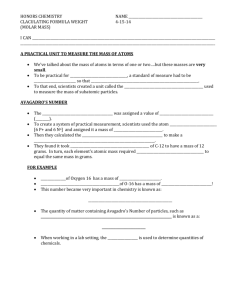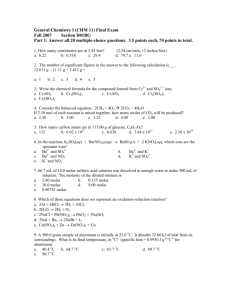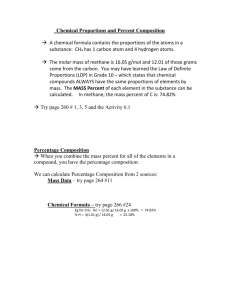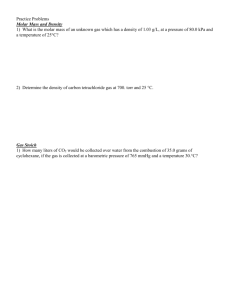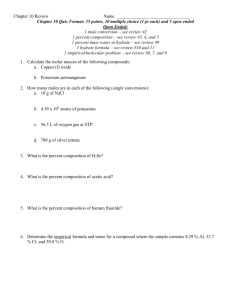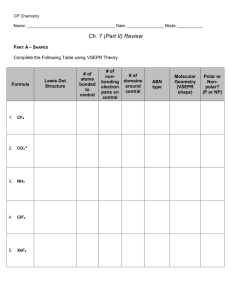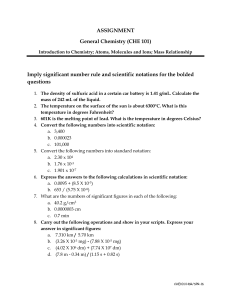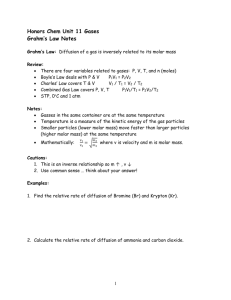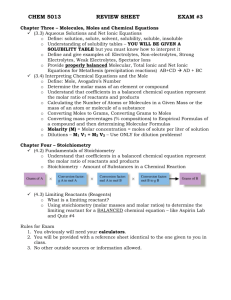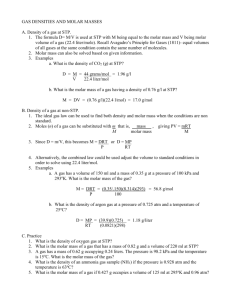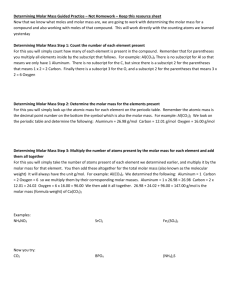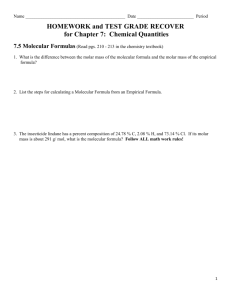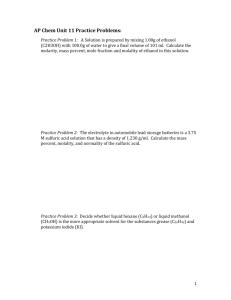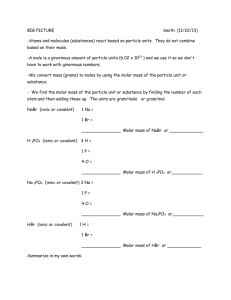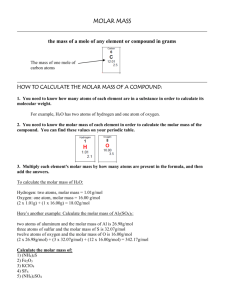Chem So Far Part 2. A) Name the following compounds: CaCl2
advertisement
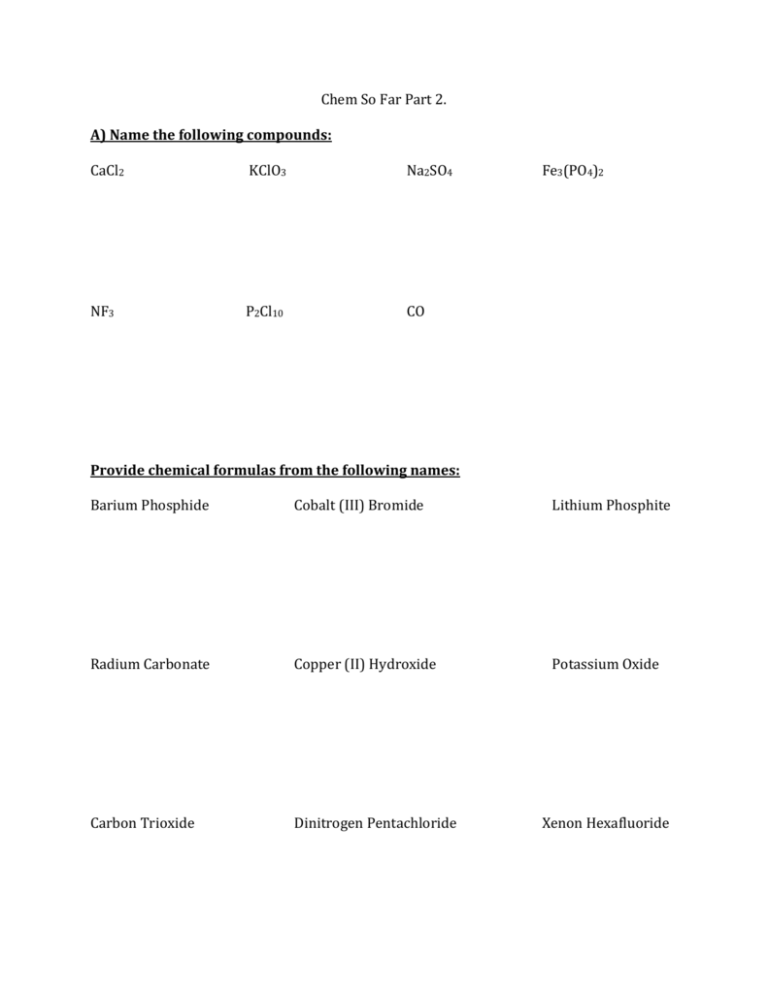
Chem So Far Part 2. A) Name the following compounds: CaCl2 KClO3 Na2SO4 NF3 P2Cl10 CO Fe3(PO4)2 Provide chemical formulas from the following names: Barium Phosphide Cobalt (III) Bromide Lithium Phosphite Radium Carbonate Copper (II) Hydroxide Potassium Oxide Carbon Trioxide Dinitrogen Pentachloride Xenon Hexafluoride B) Molar mass& the mole: The molar mass of any ONE particular element is found off the periodic table. Carbon has a molar mass of 12.01g/mol, Iron has a molar mass of 55.85g/mol and so on. When finding the molar mass of a compound, you must take into account how many of each element are present in the chemical formula. The molar mass of Mn3(PO4)2 is as follows Determine the molar mass of the following Ca(NO3)2 Using the molar mass above, we can determine how many formula units are in 400g of Ca(NO3)2 C) %Composition: There is a laptop sale at the Apple store. Usually, iPads are $500. The sale calls for 15% off the original price. How much does the iPad now cost? How much money did you save? Find the percent composition of each element in the following: Fe3(PO3)2 Mg(NO2)2 D) Empirical Formula & Hydrates A sample contains 56.58% of Potassium, 8.68% Carbon, & 34.73% Oxygen. What is the empirical formula of this compound? A 6.00g sample of calcium sulfate hydrate (CaSO4.x H2O) is heated until all the water is driven off. The anhydrous compound has a mass of 4.77 g. For the data in problem number 1 above, what is the mass percent water in the hydrate? (mass water/mass total) Suppose you had an 8.00 g sample of CaSO4.x H2O. How many grams of water would be present?


